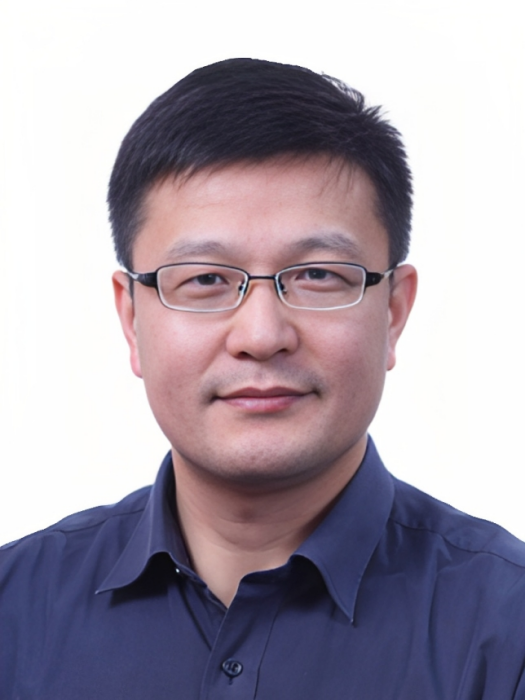胡寶洋,男,漢族,1973年4月出生,農工黨員,博士、研究員、博士研究生導師,中國科學院“百人計畫”入選者。兼任中國科學技術大學生命科學學院博士研究生導師。美國神經科學學會會員、美國眼科與視覺學會會員。
現任北京幹細胞與再生醫學研究院執行院長,中國科學院大學存濟醫學院常務副院長,幹細胞與生殖生物學國家重點實驗室副主任,中國科學院動物研究所研究員。
基本介紹
- 中文名:胡寶洋
- 出生日期:1973年4月
- 職業:教師
- 主要成就:“百人計畫”引進國外傑出人才
- 性別:男
- 職稱:研究員
- 職務:博士研究生導師
人物經歷,教授課程,主要成就,研究領域,社會任職,獲獎及榮譽,科研項目,代表論著,專利信息,
人物經歷
1990-07--1995-07 濟寧醫學院 學士
1995-07--1999-07 濟寧醫學院 教師
1999-07--2004-07 復旦大學 博士
2004-07--2005-10 濟寧醫學院 教師
2005-10--2009-03 美國威斯康星大學從事博士後研究
2009-04--2010-09 美國威斯康星大學助理科學家
2011-02 中國科學院動物研究所 研究員
北京市第十六屆人民代表大會代表
教授課程
幹細胞研究進展系列講座
主要成就
2011年1月引入中國科學院動物研究所,組建幹細胞與神經再生研究組。運用發育生物學的基本理論,建立了人多能幹細胞定向分化至特定細胞的系統。指導人胚幹細胞、iPS細胞定向分化為神經系統的多種神經和膠質細胞。發現人幹細胞神經分化的獨特性,人iPS細胞神經分化潛能的差異以及其可能原因。研究發表於PNAS, Development,Stem Cells等雜誌,曾被Nature、Science及Development等專題評述。這些成果在解答生命科學基礎問題的同時,在醫學和藥學領域有廣闊的套用前景。2011年指導研究生3名,博士後2名。
研究領域
主要從事幹細胞與再生醫學領域的研究,圍繞幹細胞醫學轉化,重點研究全能幹細胞向神經系的分化機制、人類幹細胞生物學的獨特性以及幹細胞醫藥學套用的系統化評估等科學問題。
1. 神經分化機制。用多能幹細胞定向分化和細胞重編程為模型,研究神經分化中細胞外信號、轉錄程式、轉錄前後表觀遺傳學因素如何協同指導多能幹細胞向某一特定類型細胞分化。藉助小鼠等動物模型和遺傳學手段在體內進一步驗證。
2. 人類發育和細胞分化的獨特性。以人多能幹細胞神經定向分化系統為基礎,利用比較生物學和生物信息學方法發掘決定人類高級功能和獨特性狀的調控元件及調控機制。利用攜帶神經系統疾病表型的人類iPS細胞或重編程細胞,揭示動物模型難以模擬的神經系統疾病發生機制。
3. 幹細胞醫學轉化。以定向分化為基礎,完善規模化細胞分化和體細胞直接轉分化為特定細胞類型的方法。與相關領域合作,建立細胞產品套用於細胞替代和藥物篩選的標準評估體系
社會任職
美國神經科學學會(SfN)會員,美國眼科與視覺學會(ARVO)會員。
獲獎及榮譽
“百人計畫”引進國外傑出人才(2011)
科研項目
中國科學院”百人計畫”項目 2011-2013。
(1) 人特異性miRNA-F1對人腦發育調控研究,主持,國家級,2015-01--2019-12
(2) 體外定向分化神經幹細胞移植及功能整合,參與,國家級,2014-01--2018-12
(3) 神經外胚層細胞R-C化和D-V化的調控網路,主持,國家級,2012-12--2016-12
(4) 人多能幹細胞分化神經細胞移植的免疫耐受誘導,主持,院級級,2012-08--2015-12
(5) 幹細胞與神經再生,主持,院級級,2012-07--2015-06
(6) 人多能幹細胞來源OLIG2+前體細胞向運動神經元的分化調控,主持,國家級,2012-01--2015-12
(7) 靈長類ES和iPS細胞分化為多巴胺神經細胞,參與,國家級,2012-01--2016-12
(8) 幹細胞醫學轉化研究,主持,院級級,2011-02--2013-02
代表論著
Li Z, Wan H, Feng G, Wang L, He Z, Wang Y, Wang X, Li W, Zhou Q, Hu B. Birth of fertile bimaternal offspring following intracytoplasmic injection of parthenogenetic haploid embryonic stem cells
Jiang Y, Du M, Wu M, Zhu Y, Zhao X, Cao X, Li X, Long P, Li W, Hu B. Phosphatidic Acid Improves Reprogramming to Pluripotency by Reducing Apoptosis
Wan H, Feng C, Teng F, Yang S, Hu B, Niu Y, Xiang A, Fang W, Ji W, Li W, Zhao X, Zhou Q. One-step generation of p53 gene biallelic mutant Cynomolgus monkey via the CRISPR/Cas system
Zhu H, Tan Y, Gu Q, Han W, Li Z, Meyer J, Hu B. Regulations in the United States for cell transplantation clinical trials in neurological diseases
Chen H, Qian K, Chen W, Hu B, Blackbourn L, Du Z, Ma L, Liu H, Knobel K, Ayala M, Zhang S. Human-derived neural progenitors functionally replace astrocytes in adult mice
Wang S, Li W, Wang S, Hu B. Rapid and efficient assembly of transcription activator-like effector genes by USER cloning
Wu M, Chen G, Hu B. Induced pluripotency for translational research
Jiang Y, Zhang M, Hu B. Specification of functional neurons and glia from human pluripotent stem cells
Ma L, Hu B, Liu Y, Vermilyea S, Liu H, Gao L, Sun Y, Zhang X, Zhang S. Human embryonic stem cell-derived GABA neurons correct locomotion deficits in quinolinic acid-lesioned mice
Hu B, Zhang S. Directed differentiation of neural-stem cells and subtype-specific neurons from hESCs
Hu B, Weick J, Yu J, Ma L, Zhang X, Thomson J, Zhang S. Neural differentiation of human induced pluripotent stem cells follows developmental principles but with variable potency
Hu B, Zhang S. Differentiation of spinal motor neurons from pluripotent human stem cells
Hu B, Du Z, Zhang S. Differentiation of human oligodendrocytes from pluripotent stem cells
Hu B, Du Z, Li X, Ayala M, Zhang S. Human oligodendrocytes from embryonic stem cells: conserved SHH signaling networks and divergent FGF effects
Du Z, Hu B, Ayala M, Sauer B, Zhang S. Cre recombination-mediated cassette exchange for building versatile transgenic human embryonic stem cells lines
Li X, Hu B, Jones S, Zhang Y, Lavaute T, Du Z, Zhang S. Directed differentiation of ventral spinal progenitors and motor neurons from human embryonic stem cells by small molecules
專利信息
Zhang SC, Hu BY, Du ZW. Myelinating Oligodendrocyte Precursor Populations, US patent
Zhang SC, Hu BY, Du ZW. Method of Generating Myelinating Oligodendrocytes from Embryonic Stem Cells

